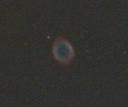I’ve been having a look at how best to combat a not-so-well-aligned and poorly tracking mount for astro imaging and it seems the preferred way is to use auto-guiding. A quick scan around the Internet and I found myself at Shoestring Astronomywhere the dollar exchange rate made the parallel port autoguider interface look very atractive.

In fact is was that atractive that, as the saying goes, “I couldn’t leave it on the shelf”. It may take up to 6 weeks to ship from the States but that gives me time to work out how I’m going to use it.
My son’s teacher Mr Nolan very kindly donated a 60mm refracter to the cause and although the mount is not up to much I’m sure if I can piggy-back it onto the Skywatcher 250 I can use my 1004x camera as an autoguider. The Shoestring parallel port interface uses different control lines to the long exposure mod on my SPC900NC so it’s possible to use the port to control both devices at the same time.
My next task it seems is finding a way to mount this scope piggy-style. There are expensive solutions for mounting larger scopes which comprise of dovetail and telescope rings which fit onto the rings of the 250, but I’d prefer to take the “shoestring” approach after spending my savings (and my future savings) on the EQ6.
A 30cm dovetail bar is around £17 and I think I’ll need this at least but then I may have to make the rings or whatever solution is required to attach the scope. If anyone has any ideas please feel free to comment, I’m open to suggestions.
So there’s my task, how to mount a 70mm refracter onto the SkyWatcher 250 before my autoguider arrives. I’ll let you know how I get on.
Software to control the autoguider will be my second task. Again I’ve searched high and low and found some products that look like they’ll do the trick.
All those listed seem to work with the Shoestring autoguider interface but until I get the hardware setup I’ve no way to compare them.
K3CCDTools looks impressive, and I already use the software for long exposure image capture, so it may be that I’ll stick with what I know. On the other hand PHD Guiding appears to be very simple to setup and may allow me to be up and running in less time.


